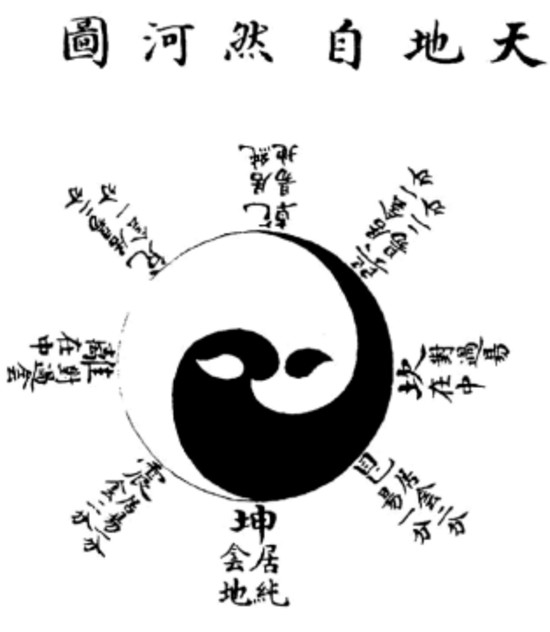|
List Of Hexagrams Of The I Ching
__NOTOC__ This is a list of the 64 hexagrams of the ''I Ching'', or ''Book of Changes'', and their Unicode character codes. This list is in King Wen order. (Cf. other hexagram sequences.) Hexagram 1 right ''Hexagram 1'' is named (qián), "Force". Other variations include "the creative", "strong action", "the key", and "god". Its inner (lower) trigram is ☰ ( qián) force = () heaven, and its outer (upper) trigram is identical. Hexagram 2 right ''Hexagram 2'' is named (kūn), "Field". Other variations include "the receptive", "acquiescence", and "the flow". Its inner (lower) trigram is ☷ ( kūn) field = () earth, and its outer (upper) trigram is identical. Hexagram 3 right ''Hexagram 3'' is named (zhūn), "Sprouting". Other variations include "difficulty at the beginning", "gathering support", and "hoarding". The meaning of "屯" is collect, store up, stingy, and stationing troops. Its inner (lower) trigram is ☳ ( zhèn) shake = () thunder, and its o ... [...More Info...] [...Related Items...] OR: [Wikipedia] [Google] [Baidu] |
Hexagram (I Ching)
The ''I Ching'' book consists of 64 hexagrams. A hexagram in this context is a figure composed of six stacked horizontal lines ( 爻 yáo), where each line is either Yang (an unbroken, or solid line), or Yin (broken, an open line with a gap in the center). The hexagram lines are traditionally counted from the bottom up, so the lowest line is considered line one while the top line is line six. Hexagrams are formed by combining the original eight trigrams in different combinations. Each hexagram is accompanied with a description, often cryptic, akin to parables. Each line in every hexagram is also given a similar description. The Chinese word for a hexagram is 卦 "guà", although that also means trigram. Types Classic and modern ''I Ching'' commentaries mention a number of different hexagram types: * Eight Trigrams * Original Hexagram * Future Hexagram * Contrasting (Reverse) Hexagram (is found by turning a hexagram upside down) * Complementary Hexagram (is found by changing a ... [...More Info...] [...Related Items...] OR: [Wikipedia] [Google] [Baidu] |
Bagua
The bagua or pakua (八卦) are a set of eight symbols that originated in China, used in Taoist cosmology to represent the fundamental principles of reality, seen as a range of eight interrelated concepts. Each consists of three lines, each line either "broken" or "unbroken", respectively representing yin or yang. Due to their tripartite structure, they are often referred to as Eight Trigrams in English. The trigrams are related to Taiji philosophy, Taijiquan and the Wuxing, or "five elements". The relationships between the trigrams are represented in two arrangements: the ''Primordial'' (), "Earlier Heaven", or "Fu Xi" bagua () and the ''Manifested'' (), "Later Heaven", or "King Wen" bagua. The trigrams have correspondences in astronomy, astrology, geography, geomancy, anatomy, the family, martial arts, Chinese medicine and elsewhere. The ancient Chinese classic, I Ching (Pinyin: Yi Jing), consists of the 64 pairwise permutations of trigrams, referred to as " hexagrams", a ... [...More Info...] [...Related Items...] OR: [Wikipedia] [Google] [Baidu] |
Gu (poison)
Gu () or jincan () was a venom-based poison associated with cultures of south China, particularly Nanyue. The traditional preparation of ''gu'' poison involved sealing several venomous creatures (e.g., centipede, snake, scorpion) inside a closed container, where they devoured one another and allegedly concentrated their toxins into a single survivor, whose body would be fed upon by larvae until consumed. The last surviving larva held the complex poison. ''Gu'' was used in black magic practices such as manipulating sexual partners, creating malignant diseases, and causing death. According to Chinese folklore, a ''gu'' spirit could transform into various animals, typically a worm, caterpillar, snake, frog, dog, or pig. Names Circa 14th-century BCE Shang Dynasty oracle inscriptions recorded the name ''gu'', while 7th-century CE Tang Dynasty texts first used ''jincan'' "gold silkworm". ''Gu'' The term ''gu'' , says Loewe, "can be traced from the oracle bones until modern times, an ... [...More Info...] [...Related Items...] OR: [Wikipedia] [Google] [Baidu] |

